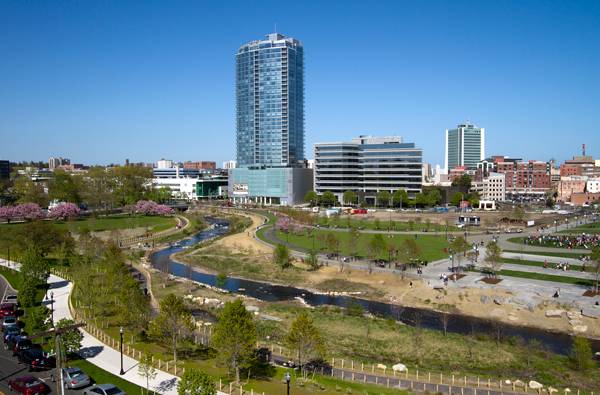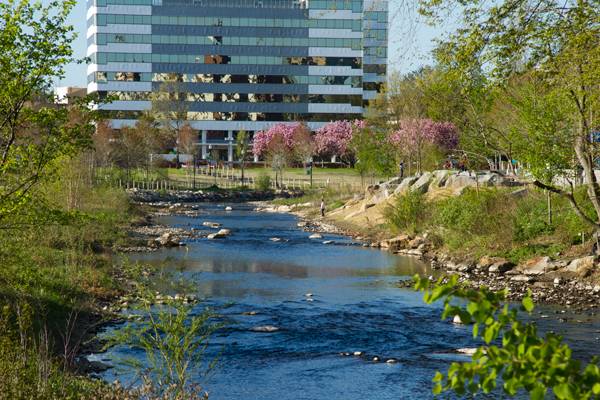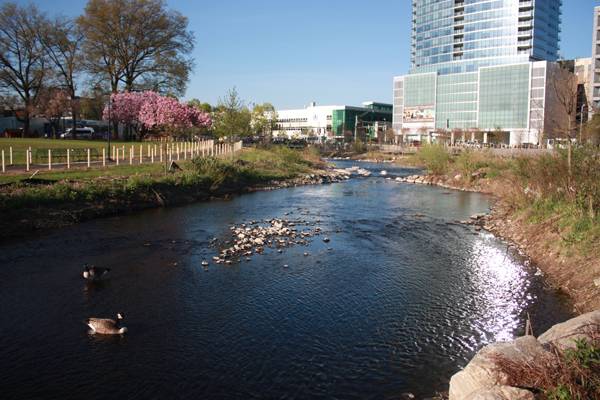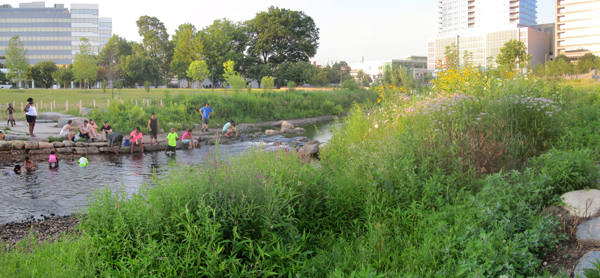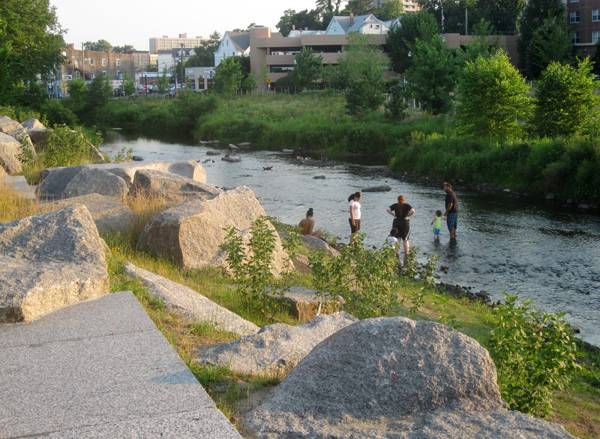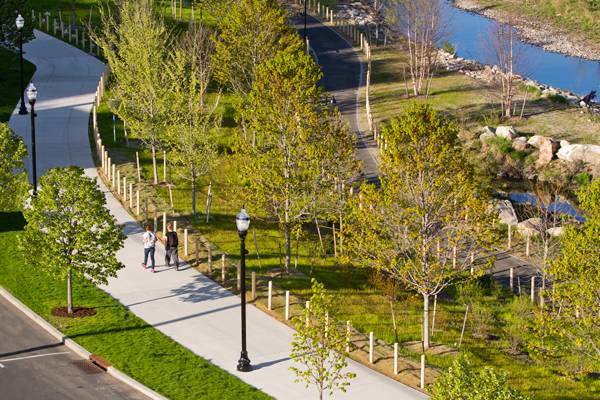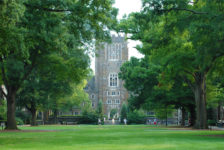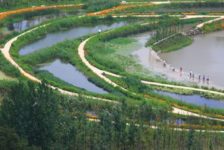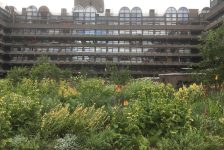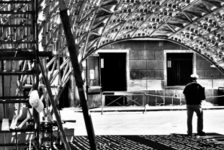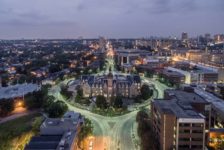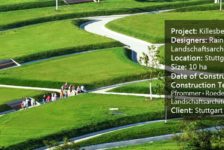Mill River Park designed by The Olin Studio in collaboration with the Mill River Collaborative. Many people dream of cultivating their own garden after retirement, but the chairman of the not for profit organization Mill River Collaborative (MRC) is turning that into reality but in a much larger scale after he accepted the challenge to implement a world class park in his hometown of Stamford, in New England, US. Arthur Selkowitz had just retired from a successful career in the advertising industry when he was asked to manage the revitalization of the downtown area, crossed by Mill River. According to him, this non paid job has become his full time occupation. Although public investments are funding this improvement for Stamford, the government cannot afford the total cost of such a complex urban operation. The MRC, used marketing tools to find donors and continued the plan, started in the 1990‘s, to recover the natural state of the river and its edges, reshaping the floodplain and creating gathering spaces in downtown.
The first achievement of MRC was the successful campaign to raise funds to hire, in 2005, the recognized firm Olin to work with the US Army Corps of Engineers in the design of the park. The aim was to create public leisure spaces and a trail system along Mill River, linking the central park to other green areas in the city by accessible walkways and cycling pathways. To enable the expansion of the open area in downtown, the public agencies in charge of municipal regulations took measures such as purchasing properties and designating the Mill River Corridor as a new zoning district. When completed, the park will occupy around 28 acres. The first 12-acre section of the Mill River Park and Greenway was opened in the spring of 2013, featuring paths around the river, which had its natural shape restored after the removal of the dam and retaining walls. For years, those constructions had hindered its access in addition to having changed the natural space for the flood flow. The downtown session of the river has become a site with difficult maintenance, characterized by accumulation of wastes. But, since its restoration, the river is flowing freely and native plants are returning on its edges. According to MRC, over 400 trees, thousands of shrubs in addition to a variety of grasses and bulbs are being planted along the river edges and surrounding areas. The aquatic habitat is also being recovered with the use of bio-engineering techniques, which are making possible the removal of contaminated sediments from the river. After the conclusion of this process, fishing and kayaking will be possible leisure options. The community has strongly supported all the implementation stages of the park. From defining the park’s program with the designers to contributing with donations and work, the residents are participating directly in the production of spaces. The playground, the first new improvement in the park, was built in 2006 by volunteers. Now, an area that was used for illicit activities is a verdant place for kids to play. See also: Turenscape Design Outstanding River Park Besides recreational activities, children are having educational benefits: the park is being used by local schools as a laboratory of Ecology. It is also a way for students be introduced to environmental careers through volunteer and paid jobs. These initiatives aim that the young generations become aware of sustainability issues. To keep year-round activities, other facilities are being built with the support of donors: a fountain, a park building and an ice skating rink, planned to be ready for 2015 winter season. Although Stamford central park has the river as main theme, the new grove composed of about 100 cherry trees is its most anticipated attraction. The trees had been long ago planted, aligned to the river, since they were donated to the city after World War II. Some of them were removed and, then, replanted in the new site designed to host a traditional Japanese festival to celebrate the spring. By promoting events and activities according to different seasons, Stamford Mill River Park has given residents the opportunity to reintegrate with Nature. This vibrant green area, joining competent landscape design with advanced bio-engineering techniques, created a balance with the large number of buildings in the center, which resulted in a healthier environment. Not only is this central park improving quality of life but it is also demonstrating an effective combination of public investment, private financial support and community engagement to revitalize the city. Recommended reading: Design with Nature by Ian L. McHarg Sustainable Urbanism: Urban Design With Nature by Douglas Farr Article written by Tania Ramos Gianone Published in BlogLogin
Lost Password
Register
If this is your first time on the new site, please click "Forgot your password?". Follow the steps to reset your password. It may be the same as your old one.


